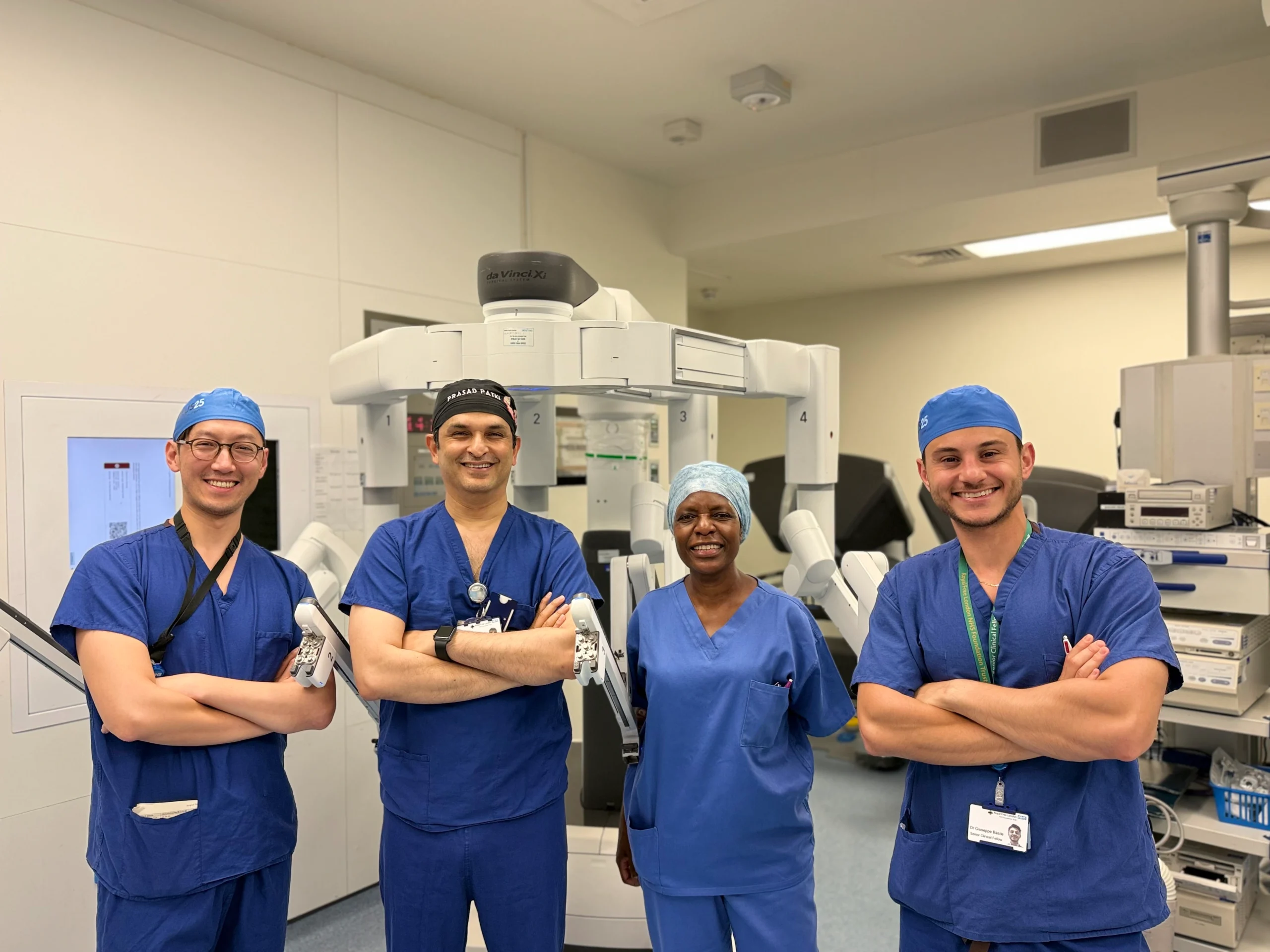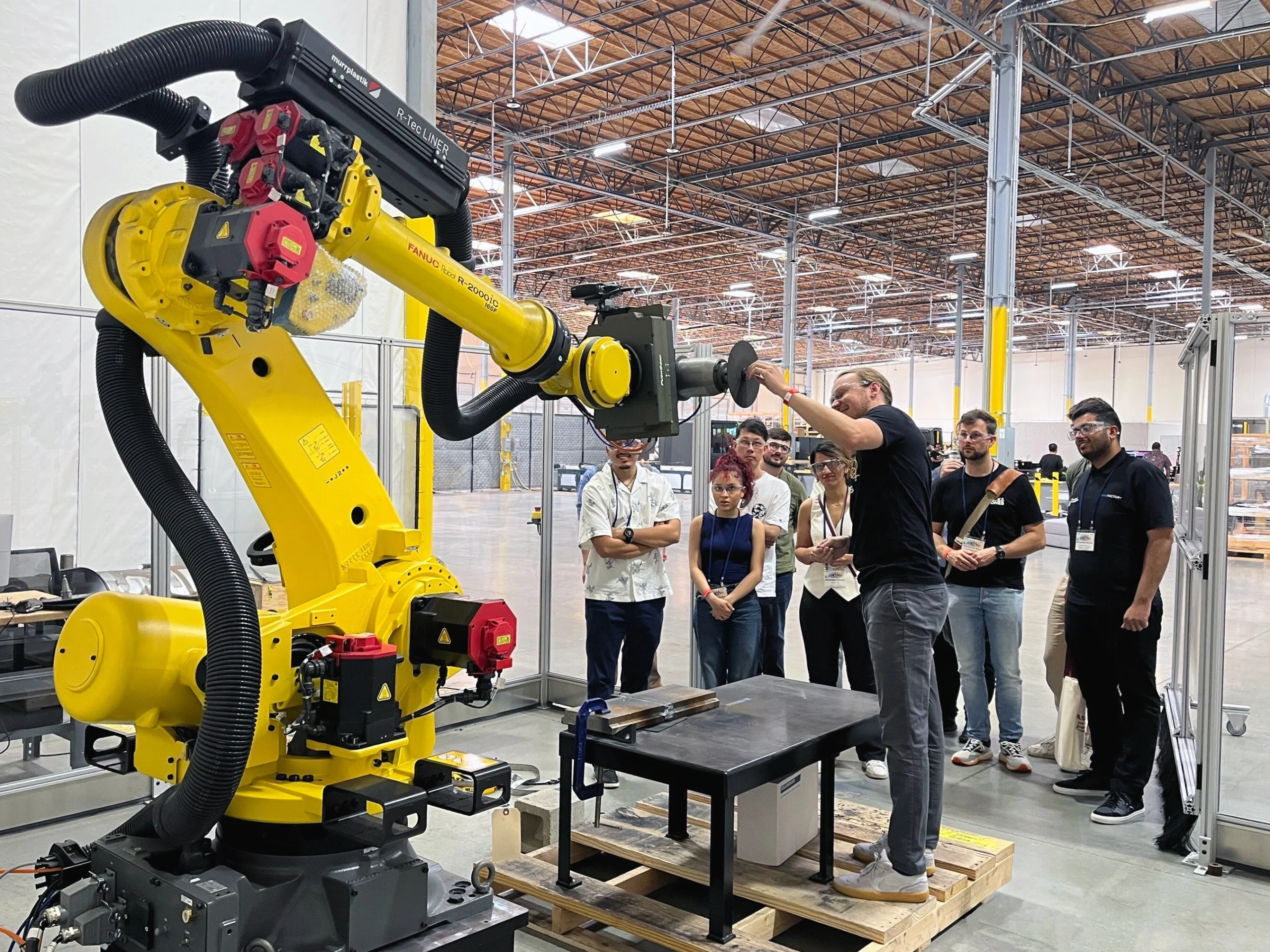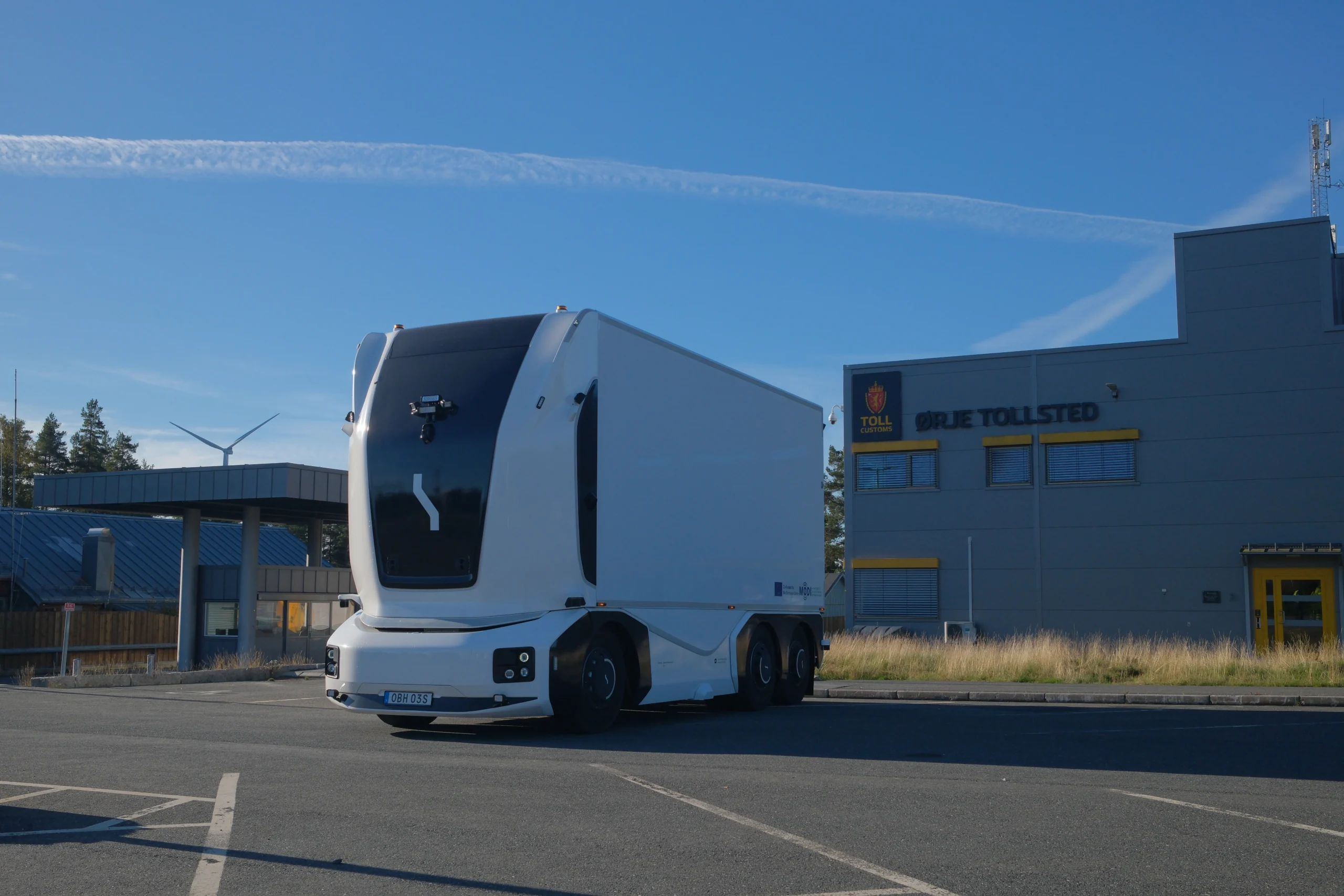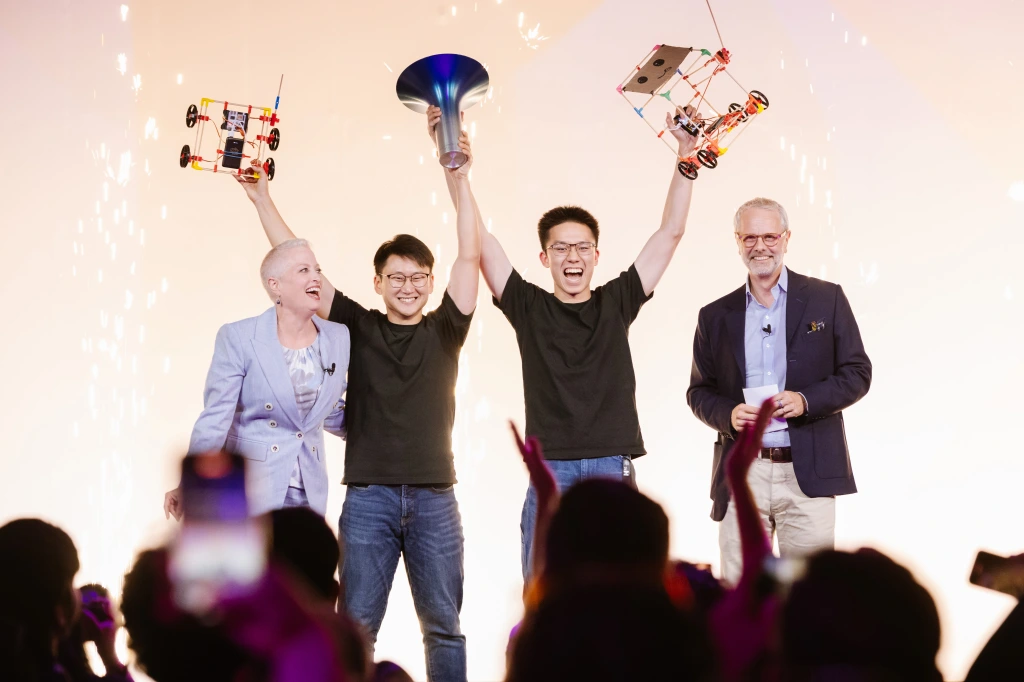Real space to work in

John E. Kaye
- Published
- Home, Technology

From beauty products to semiconductors, a surge in European space ventures is seeing companies maximise this unique environment for a whole range of research, writes Richard Brown
Soaring investment in the European space sector to spur innovative products and services is promising to reap rich commercial and societal dividends over the coming decades. Venture capital investment in space startups between 2015 through 2020 rose significantly on previous periods, while public agencies and established space companies have been substantially boosting their capabilities.
According to the not-for-profit Space Foundation, the space economy was valued at $469bn in 2021, up 9% from 2020, the highest recorded growth since 2014.
And in a recent McKinsey Technology Council podcast, Lockheed Martin’s Vice President and General Manager of Commercial Civil Space, Lisa Callahan, even referenced analysts who suggest the “space market” could exceed $1tn by 2030.
At present, the space economy generates most value by raising the value of activities on Earth but, according to experts, impressive future value could derive from work performed entirely in orbit, such as R&D and manufacturing.
So-called “new space economy” opportunities – ventures that tap the unique properties of space to generate efficiencies in R&D and manufacturing processes for drug discovery, food and nutrients, beauty and skincare and semiconductors – hold out the tantalising promise of a cornucopia of commercial successes. A few efforts to manufacture products in space are already under way. In 2020, for instance, a company received a NASA grant to investigate an autonomous and high-throughput process for creating, in orbit, high-quality chips at lower cost.
State-sponsored spurs
The 22-member, Paris-headquartered European Space Agency (ESA) provides not only expert guidance but crucial funding to help promote such innovation. Yet the ESA is confronted by myriad challenges in coordinating activities across Europe – because many countries have their own space programmes.
Florian Marmuse, Professional in Commercialisation at the ESA, accounts for the sharp rise in VC investment in space startups between 2015-2020 as being down to three principal drivers:
- There was then easy access to money overall in the world across all sectors, partly due to low global interest rates;
- In the space sector, in particular, this was the period when most companies born in the aftermath of the “SpaceX effect” – when SpaceX facilitates access to space and at the same time made space entrepreneurship trendy – started to raise money. Many of them brought a technology from the labs to the market, which takes a few years;
- There was a progressive change of behaviour of national agencies in the wake of NASA’s COTS (Commercial Orbital Transportation Services) and CRS (Commercial Resupply Services) programmes, adopting a strategy more open to entrepreneurs.
Stand-out firms that have ridden this wave of new space economy impetus include the major aerospace entities Airbus D&S and Thales Alenia Space, which now have active “NewSpace” strategies.
Explains Marmuse: “Part of the projects or processes are more risk-taking, with a more commercial approach, leaner processes, integrating young companies in industrial consortia, and sometimes creating corporate investment funds to invest in NewSpace companies.”
From a more entrepreneurial perspective, launcher companies – legacy or new – play a special role because they represent access to space. This is commercial, but also heavily strategic. In Europe, the lower cost of development promised by these companies means that a single country can now develop a launcher, raising strategic geopolitical questions.
In addition to the launcher firms, companies building and operating telecom constellations (such as Starlink, OneWeb and IRIS2) are influential, raising technical, economical, strategic and environmental issues. Yet, despite the undoubted technical and financial resilience of these new space economy pioneers, there remain impediments to Europe maintaining its position as global leader in the sector. For instance, in Europe there is relative difficulty to access especially late-stage capital. Plus, the institutional market is spread across multiple actors – and there is no strict “buy European” mandate, hence some institutions procuring critical parts from international suppliers.
For these reasons, funding for this sector in Europe is still only one-ninth of that in the United States. Marmuse of the ESA considers this to be due to one non-space specific reason: Europe hosts more risk adverse VCs and limited partners, and there is less capital available overall. He compares the development funding situation to the more traditional “deep tech” sector. With the United Kingdom, which unveiled its first national space strategy in 2022, the ambition is to “shape the space environment and use space to help solve challenges at home and overseas,” according to the government’s National Space Strategy.
This has led the UK to join forces with the United States and five other countries to develop a satellite-based quantum technology encryption network.
To be based on British startup Arqit’s technology, and aimed at commercial customers, Federated Quantum System (FQS) will use quantum breakthroughs to deter sophisticated cyberattacks. The FQS system envisages fighter jets, military units, and command and control centres sharing communications more swiftly and securely across a sovereign-controlled network. Japan, Canada, Italy, Belgium and Austria are also engaged in FQS, tapping the expertise of British Telecom, Northrop Grumman of the US, Japanese investment firm Sumitomo, the Italian military-technology company Leonardo and Austrian quantum technology startup QTL.
Arqit was party to Virgin Orbit’s LauncherOne mission, an air-launched rocket startup which attempted to launch its first payload for commercial customers in Cornwall, south-west England, in January. The rocket failed to reach orbit when, according to Virgin Orbit, an anomaly caused a premature shutdown of the rocket’s upper stage.
On the continent itself, the “France 2030” plan urges €50bn in total business investment and allocates €1.5bn to space ventures. Half of that amount is earmarked for new space companies.
Opportunities in orbit
Many companies believe that the environment of space could help them discover new products, enhance their current offerings, or decrease development timelines. An indication of this “scramble for space” is the number of patents with “microgravity” in the title or abstract, which soared from 21 in 2000 to 155 in 2020.
A December 2022 McKinsey report, Your Guide to Navigating the Space Economy, canvassed industry experts and researched potential applications for manufacturing in the final frontier. The consultant focused on four sectors: pharmaceuticals, beauty and personal care, food and nutrients, and semiconductors.
A few possible applications for manufacturing in space embrace many of the critical personal, medical and technological services and treatments we currently take for granted. Other areas include cell cultures for predicting disease models; organoids, which are miniaturised versions of human organs used as 3-D models to evaluate diseases; and the manufacture of human retinas.
Yet by far the most tantalising industry which could benefit from the Made in Space tag is semiconductors. Estimated to reach a $725bn by 2025 on Earth alone, fabrication of semiconductors in space could drastically cut the number of gravity-induced defects (from contaminants landing on chips) and increase output. McKinsey found that the natural vacuum in space could facilitate innovative, thin-layering techniques by reducing or eliminating gases during production. If space-based R&D could lead to the creation of smaller semiconductor structures, the benefits could be huge.
If space manufacturing does become widespread, it might produce some environmental benefits, says the McKinsey report. Terrestrial manufacturing processes requires huge amounts of energy, so if space-based firms use solar power during their astronomical production processes, costs could plummet and sustainability would soar.
Sign up to The European Newsletter
RECENT ARTICLES
-
 Make boards legally liable for cyber attacks, security chief warns
Make boards legally liable for cyber attacks, security chief warns -
 AI innovation linked to a shrinking share of income for European workers
AI innovation linked to a shrinking share of income for European workers -
 Europe emphasises AI governance as North America moves faster towards autonomy, Digitate research shows
Europe emphasises AI governance as North America moves faster towards autonomy, Digitate research shows -
 Surgeons just changed medicine forever using hotel internet connection
Surgeons just changed medicine forever using hotel internet connection -
 Curium’s expansion into transformative therapy offers fresh hope against cancer
Curium’s expansion into transformative therapy offers fresh hope against cancer -
 What to consider before going all in on AI-driven email security
What to consider before going all in on AI-driven email security -
 GrayMatter Robotics opens 100,000-sq-ft AI robotics innovation centre in California
GrayMatter Robotics opens 100,000-sq-ft AI robotics innovation centre in California -
 The silent deal-killer: why cyber due diligence is non-negotiable in M&As
The silent deal-killer: why cyber due diligence is non-negotiable in M&As -
 South African students develop tech concept to tackle hunger using AI and blockchain
South African students develop tech concept to tackle hunger using AI and blockchain -
 Automation breakthrough reduces ambulance delays and saves NHS £800,000 a year
Automation breakthrough reduces ambulance delays and saves NHS £800,000 a year -
 ISF warns of a ‘corporate model’ of cybercrime as criminals outpace business defences
ISF warns of a ‘corporate model’ of cybercrime as criminals outpace business defences -
 New AI breakthrough promises to end ‘drift’ that costs the world trillions
New AI breakthrough promises to end ‘drift’ that costs the world trillions -
 Watch: driverless electric lorry makes history with world’s first border crossing
Watch: driverless electric lorry makes history with world’s first border crossing -
 UK and U.S unveil landmark tech pact with £250bn investment surge
UK and U.S unveil landmark tech pact with £250bn investment surge -
 International Cyber Expo to return to London with global focus on digital security
International Cyber Expo to return to London with global focus on digital security -
 Cybersecurity talent crunch drives double-digit pay rises as UK firms count cost of breaches
Cybersecurity talent crunch drives double-digit pay rises as UK firms count cost of breaches -
 Investors with €39bn AUM gather in Bologna to back Italy’s next tech leaders
Investors with €39bn AUM gather in Bologna to back Italy’s next tech leaders -
 Axians and Nokia expand partnership to strengthen communications infrastructure across EMEA
Axians and Nokia expand partnership to strengthen communications infrastructure across EMEA -
 Forterro buys Spain’s Inology to expand southern Europe footprint
Forterro buys Spain’s Inology to expand southern Europe footprint -
 Singapore student start-up wins $1m Hult Prize for education platform
Singapore student start-up wins $1m Hult Prize for education platform -
 UK businesses increase AI investment despite economic uncertainty, Barclays index finds
UK businesses increase AI investment despite economic uncertainty, Barclays index finds -
 Speed-driven email security: effective tactics for phishing mitigation
Speed-driven email security: effective tactics for phishing mitigation -
 Short circuit: humanoids go for gold at first 'Olympics for robots'
Short circuit: humanoids go for gold at first 'Olympics for robots' -
 New IBM–NASA AI aims to forecast solar flares before they knock out satellites or endanger astronauts
New IBM–NASA AI aims to forecast solar flares before they knock out satellites or endanger astronauts -
 AI is powering the most convincing scams you've ever seen
AI is powering the most convincing scams you've ever seen


























